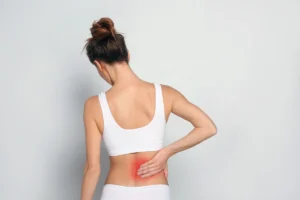How Do I Get Rid Of Lower Back Pain ASAP?
If you’re suffering from severe lower back pain, you’re likely searching for quick and effective solutions. Here are some strategies to help you alleviate that discomfort instantly and relieve lower back pain fast at home.
Check out Bull City PT’s Durham – Charlotte – Brier Creek offices.
Immediate Home Remedies for Pain Relief
One of the first steps you can take is to stop any activities that may have caused the pain or intensified it. Resting for a short time can help reduce strain on the muscles and spine. Over-the-counter pain relievers, such as nonsteroidal anti-inflammatory drugs (NSAIDs) like ibuprofen and aspirin, are effective in reducing swelling and tenderness. Acetaminophen can also be used, but it does not address inflammation. However, prolonged bed rest is not recommended as it can weaken the muscles and exacerbate the pain.
Over-the-Counter Nonsteroidal Anti Inflammatory Drugs
For faster relief, consider using over-the-counter medications like ibuprofen or acetaminophen. These drugs are effective in reducing inflammation and providing pain relief. Always follow dosage guidelines and consult with a healthcare provider before taking and if you’re already taking other medications.
Applying Heat or Cold Therapy
Another effective method is applying heat or cold packs to the affected area. Cold therapy works well in the initial 24-48 hours after the injury as it helps reduce inflammation and numb sore tissues. Following the cold treatment, you can switch to heat therapy. Using heating pads or warm baths can help relax the muscles and improve blood flow.
Simple Stretching Exercises
Gentle stretching exercises can also provide quick relief. One effective exercise involves lying on your back with your knees bent, which helps to facilitate stretches and promote flexibility in the lower back and core muscles. Stretching helps to loosen the tight muscles in the lower back and improve flexibility. Some effective stretches include the knee-to-chest stretch, lower back rotational stretch, and the cat-cow stretch. Make sure to perform these exercises slowly and avoid any that cause more pain.
By combining these methods, you can effectively manage and reduce your lower back pain, allowing you to get back to your daily activities with less discomfort.
What Is Causing My Lower Back Pain?
Understanding Common Causes of Lower Back Pain
Lower back pain is a prevalent issue faced by many individuals. Identifying the root causes can be essential for effective treatment and long-term relief. Common causes include muscle or ligament strain due to heavy lifting or an awkward, sudden movement. Persistent back pain, often referred to as chronic back pain, could also stem from skeletal irregularities, such as scoliosis or other structural issues. Understanding these causes can help in choosing the most appropriate female lower back pain treatment methods. Learn more about lower back pain and causes and treatments.
Physical and Lifestyle Factors
Physical activity and lifestyle choices play a significant role in either alleviating or exacerbating lower back pain. Maintaining a proper sitting position is crucial to alleviate lower back pain, as good posture helps ease pressure on the spine. Sedentary lifestyles, poor posture, and inadequate physical activity can contribute to stiffness and discomfort. Conversely, engaging in activities without proper preparation or technique can also result in pain. For instance, improper lifting techniques can strain the back muscles and ligaments. Addressing these issues involves a proper balance of mobility and strength exercises, ensuring proper ergonomic setups at work and home, and implementing healthy lifestyle changes.
Medical Conditions Related to Back Pain
Several medical conditions might be contributing to your lower back pain. Chronic conditions such as arthritis, osteoporosis, or herniated discs are common culprits. In these cases, muscle relaxants can be part of the treatment strategy to manage chronic pain effectively. Arthritis can lead to the narrowing of the space around the spinal cord, known as spinal stenosis. Osteoporosis, prevalent among older adults, makes bones fragile and more prone to fractures, including compression fractures in the spine. In such cases, identifying the best medicine for lower back pain is crucial, often necessitating a consultation with healthcare experts.
When to Seek Medical Advice
Not all lower back pain requires medical intervention, but certain signs should prompt you to seek the advice of a healthcare professional. If you’re experiencing persistent pain that doesn’t improve with self-care, or if the pain is severe and accompanied by other symptoms like numbness, tingling, or weakness in the legs, it’s time to get professional help. For severe pain, opioid medications may be considered, but it is crucial to consult a healthcare provider to explore alternative pain management strategies first. A physician can provide diagnostic insights through physical examinations and imaging tests to understand the underlying causes and suggest the appropriate treatment path, which may include physical therapy, medications, or other interventions.
How To Avoid Lower Back Pain?
Avoiding lower back pain involves a multifaceted approach that includes making changes to daily habits, implementing ergonomic adjustments, maintaining a regular exercise routine, and focusing on weight management and nutrition. Here’s a detailed look at each strategy:
Daily Habits to Prevent Back Pain
Your daily habits significantly impact your lower back health. Strengthening your abdominal muscles is essential as it provides support to your back and helps prevent pain. Proper posture is crucial; always ensure you sit and stand with a straight back, keeping your feet flat on the floor. Avoid prolonged periods of sitting by taking regular breaks to stand, stretch, and move around. When lifting heavy objects, use your legs rather than your back to reduce strain. Additionally, stress-relief techniques such as yoga or meditation should be incorporated to prevent muscle tension and discomfort, thereby promoting a healthy spine.
Ergonomic Adjustments at Work
Given that many people spend a substantial portion of their day working, ensuring your workspace is ergonomically designed can help prevent lower back pain. Use an ergonomic chair that supports the natural curve of your spine, and position your computer screen at eye level to avoid leaning forward. Your keyboard and mouse should be within easy reach to prevent unnecessary strain on your back and neck muscles. Investing in a standing desk can also encourage healthier postures by allowing you to switch between sitting and standing throughout the day.
Importance of Regular Exercise
Regular exercise is vital for maintaining a healthy back. It also plays a crucial role in managing chronic pain, including chronic back pain, by improving physical function and reducing discomfort. Focus on lower back pain relief exercises and core-strengthening routines to support your spine and alleviate pressure on your lower back. Activities such as swimming, walking, and cycling are excellent choices for overall back health. In addition, incorporate flexibility and strength training exercises to keep your muscles balanced and reduce the risk of injury. Always consult your physical therapist to tailor an exercise program that suits your needs and abilities.
Weight Management and Nutrition
Maintaining a healthy weight is crucial as excess weight, especially around the abdomen, can put additional strain on your lower back. Maintaining a healthy weight can help relieve pain by reducing strain on the lower back. Follow a balanced diet rich in whole foods, lean proteins, vegetables, and fruits to support your weight management efforts. Proper hydration and adequate intake of essential nutrients such as calcium and vitamin D are also critical for bone health, which directly impacts your spinal health. Consider working with a nutritionist to develop a diet plan tailored to your lifestyle and health needs.
By integrating these strategies into your daily routine, you can significantly reduce the risk of developing lower back pain and enjoy a healthier, pain-free life. If you have specific concerns, Bull City PT offers personalized consultations to help you create an effective prevention plan. Book you appointment today!







